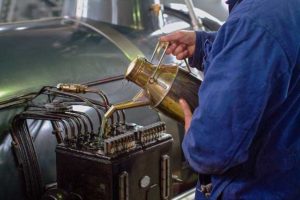Most car owners are so obsessed with their set of wheels that they love to service and repair it on their own. By doing so, they not only save time, errands, and money, but they also feel connected with their car more profoundly. For every car enthusiast, there comes a moment when he takes ownership of a car and that’s probably the most ecstatic moment whose effect won’t die down soon.
Table of Contents
With ownership Comes Responsibility
If your car has completed its first 6k miles, be ready to shell out some bucks towards its maintenance. If you have no idea about what to look for and what to change, this guide will certainly help you through the process.
Following are the things to do when your car completes its first 6k miles.
Change engine oil, air filter, and oil filter

This is the first thing you will want to do when the time is ripe. Over 6-7k miles, the engine oil tends to burn out and loses out its lubrication property to constant friction inside the cylinders. Do not put off changing engine oil ever, for you might end up causing irreversible damage to the engine’s internal components. Also, changing the oil and the air filter is mandatory every 6k miles.
Check all fluids and top off if necessary

There are various fluids that are used to run different components of a car, and running out on any of these fluids can be devastating for your car’s health. Check the fluid level in the following components and top off if necessary:
- Radiator
- Brakes
- Transmission
- Clutch
- Power steering
- Battery
Wheel Alignment

Wheel alignment is something you cannot do on your own, for it requires big equipment, which is, however, available at 4 wheel alignment facilities. Wheel alignment is mandatory every 6k miles or whenever your service is due, but in case you drive over rough terrains, wheel alignment should be done every 2k miles.
Cleaning and Detailing

Your car will have borne enough abuse by the time it has run 6k miles. Therefore, overall cleaning, waxing, and detailing should be done in order to maintain the look and feel. If your car has scratches, dents, and nicks, you can take it to the nearest car paint facility to subdue the signs of wear and tear. You will also want to vacuum and polish your car from inside to maintain the desired feel.
Check hoses and lights

Radiator hoses often get a minuscule crack due to a collision or mishandling by the mechanic, which leads to leakage. Check for any spillage under the hood, around the hoses, or below the radiator’s cap. You can do this by letting the engine idle for a few minutes and then check for leakage.
Also, check all the lights one by one and see if they are coming on at the right time.
Engine Idle Setting

In modern cars, the engine should idle between 600 and 900 RPM, under ideal conditions. Any fluctuation or constant drop in RPM should be addressed immediately so as to prevent future problems. It is advised to take your car to a reliable mechanic for the engine’s tuning.
Conclusion
DIY car maintenance is fun and exciting, but for that, you need to have the required skills and tools up your sleeves, lest you will cause more damage to your car than you might think. If you have thought this through and can confidently address issues that take place under the hood, you are good to go.




